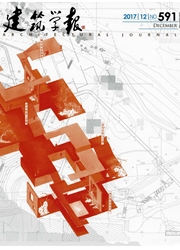

 中文摘要:
中文摘要:
文章将防洪措施分为控洪措施和适洪措施两大类。其中控洪措施指用修堤、筑坝、建水库等工程手段控制洪水,使之不能泛滥成灾,其特点是要人为地改变自然界洪水的运动规律;而适洪措施是用工程或非工程的办法,使人类能适应自然界的洪水环境,从而达到防洪减灾或有洪无灾的目的,其特点是人类非人为地改变自然界洪水的运动规律,而是主动去适应自然界的洪水环境。近代广西梧州的骑楼城就是中国适洪城市的典型范例。文章论述了梧州城市因水而兴的特征及其古代和近代城市发展的历史,并进一步讨论了梧州历史上洪水灾害的特点与防洪措施,特别聚焦于近代梧州骑楼城的适洪措施,以及在现代遇到的问题。
 英文摘要:
英文摘要:
This article introduces two types of measures against foods: the food control measures and the food adaptive measures. The former intends to prevent foods from overfowing by using the construction of dykes, dams, reservoirs, and other engineering projects, the feature of which is to change the motion rule of foods artifcially. By contrast, the latter lets people adapt to fooding circumstances and achieve the purpose of controlling food or avoiding food disasters, the feature of which is not to change the movement rule of foods but to actively adapt to fooding environment. By taking the Qiloucheng of Wuzhou in Guangxi Zhuang Autonomous Region as an example of city adaptive to fooding circumstance, the article looks back Wuzhou’s rise-up as a waterfront city and its history of urban development in both ancient and modern times.It further discusses its urban food disasters and the measuresagainst fooding in the ancient and modern times, focusing onthe food adaptive measures developed in the modern time, aswell as the problems that the measures encountered nowadays.
 同期刊论文项目
同期刊论文项目
 同项目期刊论文
同项目期刊论文
 期刊信息
期刊信息
